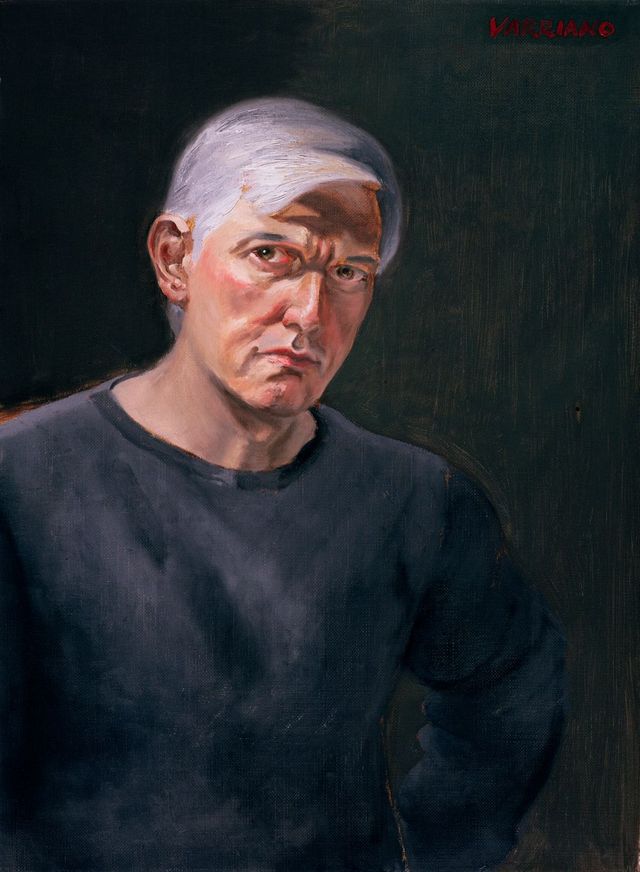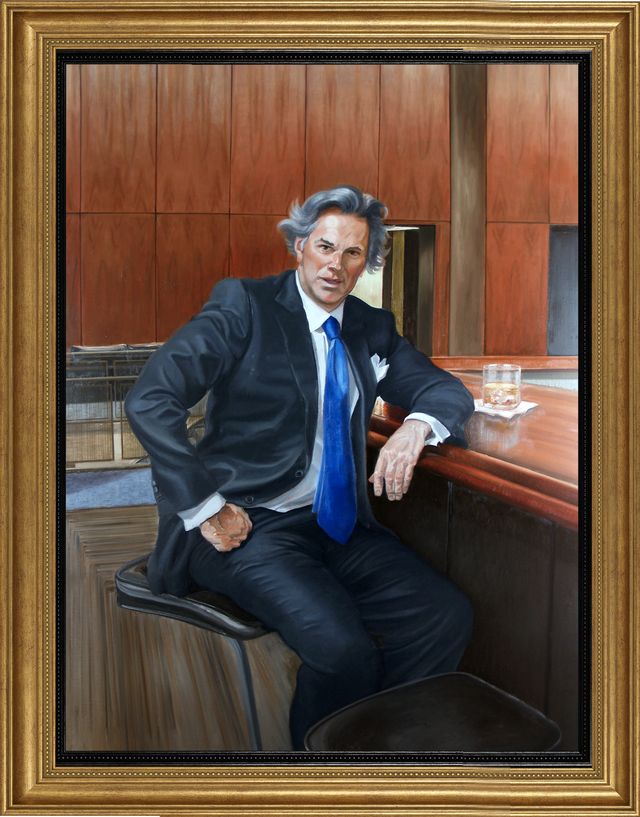Revealing the Secrets Behind Expressive Figurative Oil Painting Styles
Wiki Article
The Evolution of Metaphorical Oil Painting: Recognizing Its Historical Importance and Modern Interpretations
The evolution of figurative oil painting works as a compelling lens whereby to analyze the interplay in between creative expression and historic context. From the meticulous naturalism of the Renaissance to the stirring power of the Baroque, each era has actually added layers of significance and strategy to this classic medium. Contemporary artists, drawing from this rich heritage, are currently reinterpreting the human number in means that test traditional narratives. As we discover these improvements, one need to take into consideration exactly how the discussion between present and past informs not only artistic method yet also social representations in a significantly complicated world.Beginnings of Metaphorical Oil Paint
The origins of metaphorical oil paint can be traced back to the early Renaissance in Europe, specifically in the 15th century. This period noted a considerable departure from the flat depictions and inflexible types characteristic of middle ages art. Musicians began to explore naturalism, stressing the human figure and its psychological expression. The growth of oil paint enabled higher deepness of color and information, enhancing the realism and vibrancy of their job.
In this transformative era, figures were commonly shown within contextually rich environments, showcasing not just their physical characteristics but also their mental states. Leaders such as Jan van Eyck and Titian used the medium's convenience, employing layering techniques to accomplish luminance and texture. This innovation facilitated the representation of detailed textiles and the nuances of skin tones, contributing to the growth of portraiture and narrative scenes.
In Addition, the Renaissance emphasis on humanism fostered a recognition for distinctiveness, which in turn affected artists to develop even more vibrant and relatable numbers - figurative oil painting. Because of this, figurative oil paint arised as a powerful car for storytelling and emotional interaction, preparing for future creative activities and styles
Trick Historical Movements
Substantial historical motions have formed the advancement of metaphorical oil painting, each adding distinct ideologies and strategies that increased the medium's possibilities. The Renaissance marked a turning point, stressing realistic look and the human kind, with artists like Leonardo da Vinci and Michelangelo pushing the limits of physiological precision and perspective. Following this, the Baroque era brought dramatic contrasts of light and darkness, exhibited by Caravaggio, that instilled spiritual themes with intense emotionality.The 19th century introduced Romanticism and Realism, where artists such as Delacroix and Courbet tested timeless ideals, focusing on individual expression and daily life. The development of Impressionism further transformed the medium by highlighting the impacts of light and shade, leading to a departure from conventional depiction.
In the very early 20th century, motions like Expressionism and Cubism redefined metaphorical painting through abstraction and the expedition of emotional deepness. Each of these activities not just mirrored the social changes of their times yet likewise prepared for contemporary analyses. The interaction in between these historical activities has actually produced a rich tapestry of ideologies and styles, affecting modern-day musicians in their search of recording the human experience on canvas.
Strategies and Products Evolution

Throughout the Baroque period, methods such as chiaroscuro and sfumato arised, enhancing the psychological vibration of metaphorical compositions. Musicians started to trying out glazes and impasto, manipulating texture and brightness. By the 19th century, innovations like the usage of pre-mixed paints in tubes revolutionized ease of access, enabling artists to repaint en plein air and capture the short lived impacts of light.
The 20th century observed the intro of synthetic pigments and tools, which increased the scheme and changed the consistency of oil paints. Additionally, the expedition of new application strategies, such as palette blades and brushes of varying tightness, further diversified imaginative expression. Jointly, these advancements show the advancing relationship in between materials, methods, and the creative vision integral in figurative oil paint.

Contemporary Analyses
Contemporary analyses of figurative oil painting show a vibrant dialogue in between custom and innovation, where artists challenge established why not try this out norms and discover varied styles. This advancement manifests in various ways, as contemporary artists mix classic strategies with modern ideas, often addressing social, political, and individual narratives.Several experts attract inspiration from historical jobs, yet they infuse their pieces with modern perspectives, utilizing the human kind as a lorry for commentary on gender, culture, and identity. Artists significantly experiment with abstraction, distortion, and multimedias, which enables for a wider interpretation of the figure and its context.
Additionally, the usage of vibrant shade combinations and unconventional compositions typically offers to disrupt typical checking out experiences, prompting important interaction from target markets. This shift in focus extends past looks; it shows an expanding awareness of the complexities of human experience in an interconnected globe.
As metaphorical oil paint proceeds to evolve, it stays an essential medium for checking out the subtleties of modern life, embodying both a regard for heritage and a dedication to dynamic idea. The result is a rich tapestry of expression that resonates with the intricacies of the modern-day human condition.
Effect On Modern Art
The influence of figurative oil painting on modern-day art is profound, as it has continually inspired a myriad of creative motions and methods throughout the 21st and 20th centuries. From Expressionism to Surrealism and beyond, the expedition of the human figure has actually remained a central style, permitting musicians to convey complex emotions and narratives. This emphasis on metaphorical depiction has resulted in a re-examination of conventional strategies, leading to innovative methods that mix realism with abstraction.
Furthermore, contemporary artists official site have welcomed metaphorical oil paint as a way to resolve social and political issues, using the tool to challenge assumptions of sex, identification, and society. The renewal of interest in figurative job in current years shows a yearning for link in a progressively electronic globe, where human experience and emotion are critical.
In addition, the dialogue between metaphorical oil paint and modern art appears in the works of musicians such as Kehinde Wiley and Jenny Saville, that make use of historic recommendations while instilling their pieces with modern importance. Inevitably, figurative oil paint remains to shape and redefine contemporary creative expression, emphasizing its long-lasting significance in the art world.
Verdict
The development of figurative oil paint emphasizes its historic significance and versatility across various artistic movements. Eventually, figurative oil painting continues to be a vital tool for checking out the human experience, reverberating greatly in today's electronic landscape.The advancement of figurative oil painting serves as an engaging lens through which to check out the interaction in between artistic expression and historic context.Substantial historic motions have formed the advancement of figurative oil painting, each contributing unique ideologies and techniques that increased the tool's opportunities.As historical activities formed the trajectory of figurative oil painting, the methods and products utilized by musicians have actually also undergone considerable transformations. figurative oil painting.The impact of figurative oil paint on news modern-day art is profound, as it has constantly motivated a myriad of artistic movements and practices throughout the 20th and 21st centuries.The advancement of figurative oil paint highlights its historical importance and adaptability across various creative movements
Report this wiki page